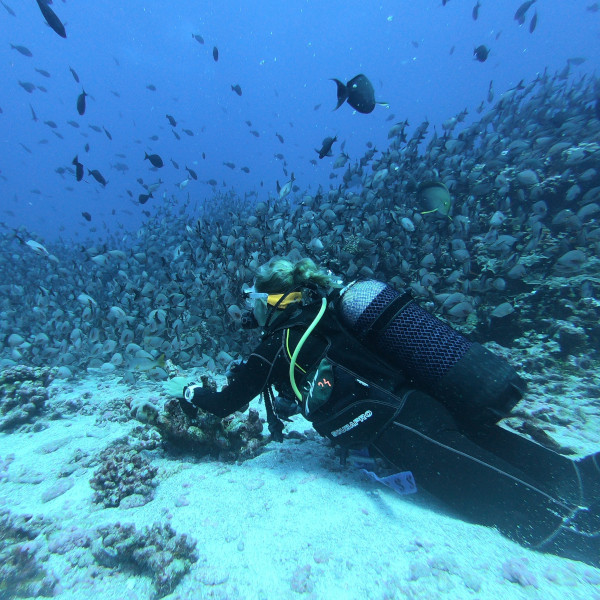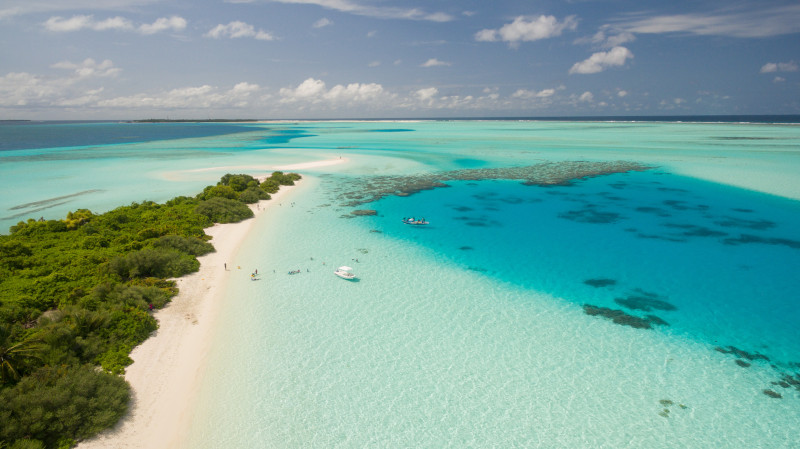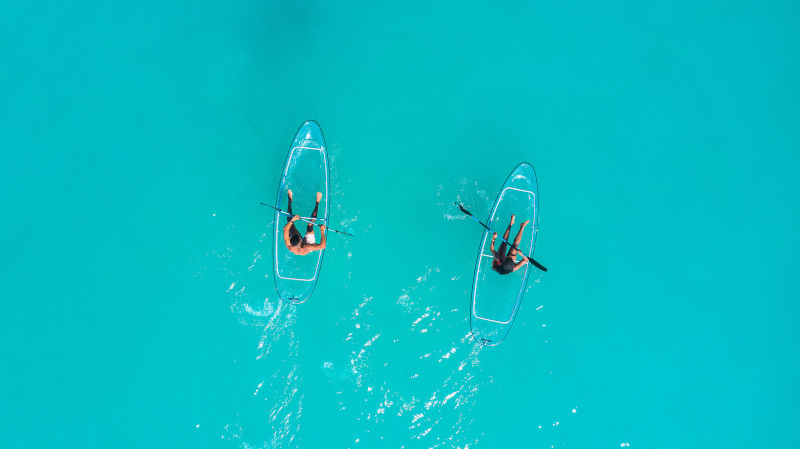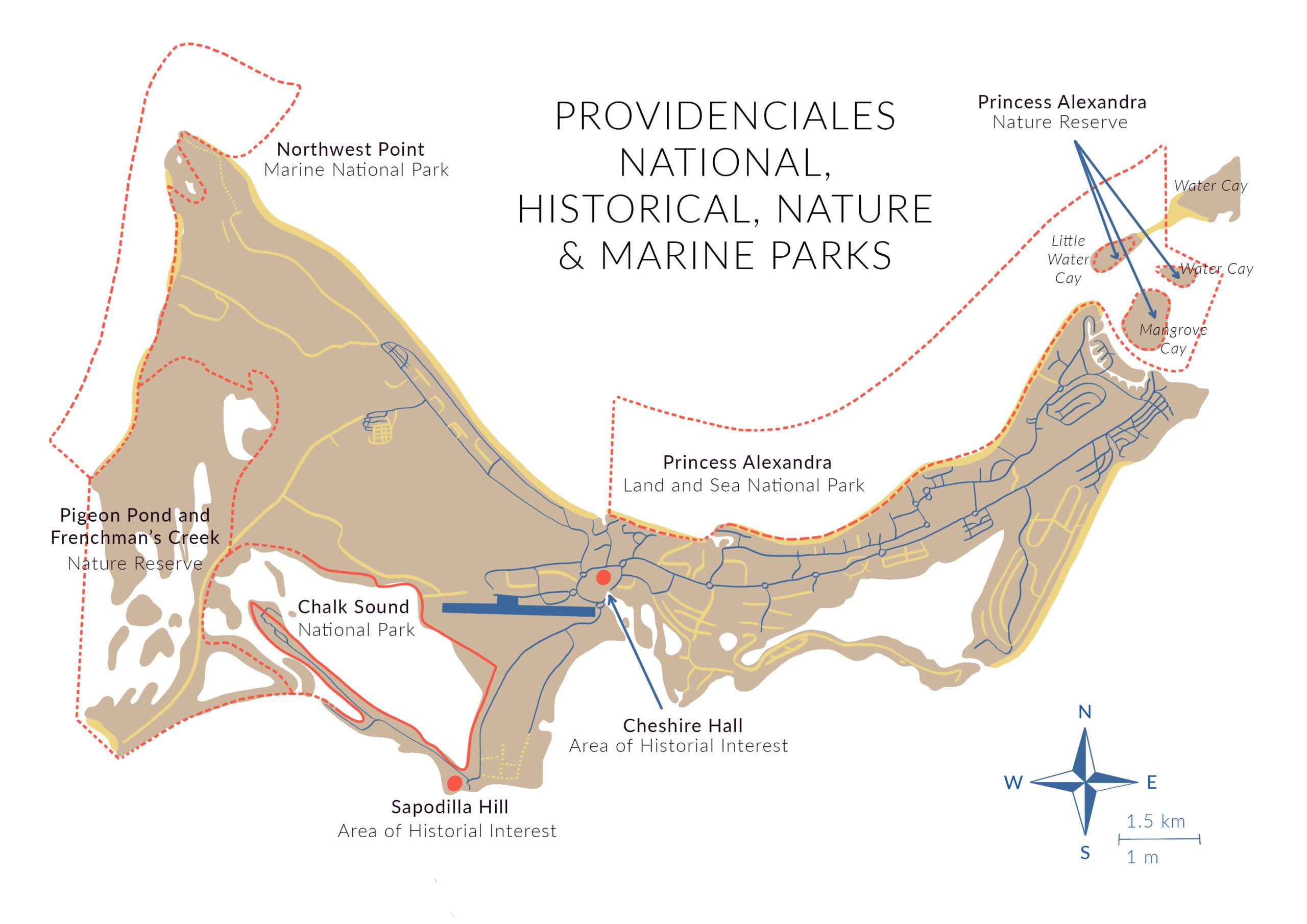The National Parks and protected areas in the Turks and Caicos were designated in the early 1990’s after considerable work was carried out in identifying and selecting the varied and unique ecosystems and terrains that required preserving.
Princess Alexandra National Park, which includes the world-famous Grace Bay Beach and the smaller nature reserve within it, understandably attracts the most amount of eco-tourists of any protected area in the Turks and Caicos.
The other National Parks and protected areas on Providenciales have historically not been high up on the tourism list because of a mix of lack of awareness, limited access, and safety concerns.
NATIONAL PARK REGULATIONS
As you would expect the Turks and Caicos national parks, nature reserves, and historical sites prohibit harming plants, animals, and historical items.
This means no fishing or shell collection in these areas; however you can thoroughly enjoy the incredible national parks and the stunningly beautiful protected areas.

PRINCESS ALEXANDRA NATIONAL PARK
Declared a national park in 1992, the Princess Alexandra National Park includes 6,532 acres of coastal and marine waters, as well as coastline off the northern coast of Providenciales.
Included in this protected area are Grace Bay Beach, The Bight Beach, The Bight Reef (Coral Gardens), Leeward Beach, Smith’s Reef, and a large portion of the northern barrier reef off Providenciales.
The Princess Alexandra Nature Reserve is also located within the national park and consists of the iguana sanctuary of Little Water Cay (Iguana Island), the wetlands islands of mangrove Cay and Donna Cay, and the rocks of Lizard Cay, Bird Cay, and the Sinking Cays.
The barrier reef off the north coast of Provo is an extremely popular destination for scuba diving, snorkeling and boat trips – some other wonderful ways to enjoy the Princess Alexandra National Park are kayaking and stand up paddle boarding.
NORTHWEST POINT MARINE NATIONAL PARK
Northwest Point Marine National Park is a beautiful coastal environment at the extreme north-eastern point of Providenciales, and an ideal place to discover & explore some of the fantastic natural features of the Turks and Caicos on a boat trip.
This area consists of two protected zones: the Northwest Point Marine National Park, which includes a large proportion of the ocean and coast right up to the high tide point, and Northwest Point Pond Nature Reserve, an inland marine wetland ecosystem of two ponds and underwater caves.
The interior ponds at Northwest Point are some of the best birdwatching spots on Providenciales, and particularly impressive when the ocean swell is high.
The main points of interest here are the rugged marine limestone coastline (locally called ‘ironshore’), small coves and beaches, wetlands, and magnificent ocean conditions off the point.
Because the water at the Northwest Point can be rough at times, has hidden rocks and coral, large amounts of seaweed and sea urchins, the area is not a great place for swimming. However and when conditions are calm, there’s superb snorkeling off the western side of the point. As in all national parks in the Turks and Caicos, fishing is illegal here.


CHALK SOUND NATIONAL PARK
Chalk Sound is a stunningly beautiful natural lagoon on the southwest of Providenciales. This national park features shallow and brilliant turquoise water with hundreds of small rocky islands.
The water in Chalk Sound is clean & clear, and the incredible colors are created by the sunlight deflecting off the fine limestone sand and particles of the area.
On a calm day Chalk Sound is a wonderful location for kayaking and paddle boarding. Many residential and rental villas are located here, as are the beautifully stunning Sapodilla Bay and Taylor Bay beaches.
Chalk Sound is virtually landlocked, yet a channel does connect it to the ocean and Caicos Banks off the south of Providenciales.
Powered watercraft use is prohibited because of Chalk Sound’s protected status as a national park, and the main attraction for the majority of visitors is sightseeing either by road on the southern side, or kayaking and paddle boarding.

